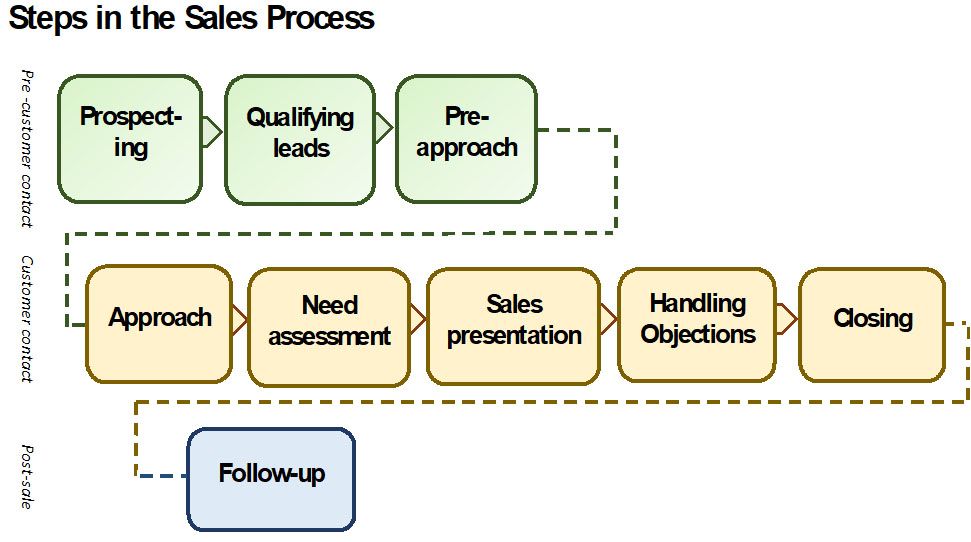According to the LinkedIn State of Sales Report 2021, 54% of the sales representatives say that sales tools are catalyzers to help build a better relationship with the customers. The decision pertaining to whether it is worth the effort to bring a customer inside your sales funnel is aided by the information a sales representative gleans from the relationship he has built with the customer.

One of the most effective tools a sales representative can utilize to qualify sales is the MEDDIC sales process. MEDDIC is an acronym; expanded, it spells out the steps a sales rep must practice to qualify a sale:
- M - Metrics
- E - Economic Buyer
- D - Decision Criteria
- D - Decision Process
- I - Identify Pain
- C - Champion.
MEDDIC sales process is extremely aiding in selling a product or service to the right audience. It may so happen that with all the right strategies and tools, your business is still unable to close sales targets - the problem may not be the "how", but the "who".
MEDDIC helps your customer team to qualify leads based on the best possibility of conversion so that your business may reach its targets faster. In other words, MEDDIC employs the technique of sales forecasting to predict whether or not a sale would be happening with a buyer. This comes in handy when dealing B2B in deals that are worth millions of dollars.
The knowledge of pitching at the right time to the right people has the best chances of conversion than pitching to the best of your abilities to just anyone. With MEDDIC, your sales representatives proceed with thoroughly examining each lead before deeming it sales-worthy, helping drive more conversions than before. A prime example is of the inventor of MEDDIC himself, Jack Napoli, who tripled his company's sales and slingshotted the figure from five digits to nine in just four years!
MEDDIC, to those who know how to use it, is an invaluable asset. All industries can benefit from utilizing this sales qualification process. Let's see how it helps to employ the MEDDIC sales process at your company.
Why Apply MEDDIC Sales Qualification?
The first reason is that you don't want your business to be talking to a wall while pouring in precious resources while doing that. It is more important than you think to first determine whether or not a lead is actually interested in using your product to address his problems.
Especially if you are a business providing high-value products or services to your clients or customers, it is even more important to ascertain the qualification of a lead before allocating resources to actively start marketing to them. A prime example is if you are a property business: the resources needed to nurture a lead into purchasing are quite valuable and the sales cycle spans over months - it begs for a more selective approach towards your discovered leads. One of the most effective methodologies is the MEDDIC qualifications process.
Quite convincingly, MEDDIC is only a skeleton - a checklist, if you will - of prerequisite characteristics or behaviour that a leader must exhibit in order to be classified as a qualified sales lead. Being so, there isn't a steep learning curve involved for your personnel to feel daunted by the fancy jargon; in fact, it is quite a simple and straightforward "yes" or "no" thing. The framework stipulates necessary information be sought from the customers in order to investigate whether or not it adds up enough to be called "qualified".
The corollary leads to creating effective contact forms and tactfully seeking the requisite information inputs from your customers. This can be handled effectively provided that your sales team knows how to work with buyers and sales personas.
Let's now go through the MEDDIC sales process step by step.
Step by Step Walkthrough of The MEDDIC Sales Qualification Process
The six steps of MEDDIC are Metrics, Economic Buyer, Decision Criteria, Decision Process, Identify Pain and Champion.
Metrics
The first step in sales qualification is discovering whether or not your sales lead has a clear, quantifiable picture of his goal in mind. Knowing this number helps your sales development rep to showcase those specificities of your product that can conduce the accomplishment of the buyer's goals. For example, say your buyer wishes to achieve sales of 5,000 units of air conditioners by the end of the current quarter - hunt for such clearly defined, goal-oriented metrics.
Getting to know the background of these metrics and why they are important to the buyer will help your sales rep to craft a meaningful and relevant narrative about your product that targets the buyer's needs directly. Some of the questions you need answered here are:
- What goals your client/customer is bent on achieving, and
- What his measure for success is going to be.
When this is done, move on to the second step.
Economic Buyer
This step of MEDDIC sales qualification is especially relevant if your business is a high-consideration and high-spend niche (for example, property). When speaking to a customer or a client, chances are that your sales development rep has established a single point of contact within their business, who is now doing the talking with your representative. It is highly probable that this point of contact is influential but doesn't have the final say on deal closure. That being said, it is necessary to assess the degree of sway this person holds pertaining to the deal in question.
Subtly, through initiating positive and reinforcing conversations with this contact, it is imperative to discover the person making all the final decisions - the Economic Buyer - and get in touch with them directly with an offer. If that seems impossible or out of the question, there is a need to garner a good relationship with the existing contact on the lines of understanding the expectations of the Economic Buyer from your product. Tailoring your solutions to mirror the expectation, priority and motivation of the Economic Buyer and creating a sales pitch on these terms will go a long way in securing the deal.
The key questions to ask your clients are how they view success and if there is someone else involved in the financial decision. When you have your answers, move on to the next step.
Decision Criteria
This is perhaps one of the most important steps when creating an effective pitch to seal a deal. It involves understanding where your product stands in a long list of competition that your customer is currently considering purchasing from. Not only does this give your product an edge over the competition, but also creates an opportunity to up-sell and cross-sell related (but useful) products.
Start by understanding the kind of solutions your client or customer is looking for. You can take the help of your contact in the firm. In order to be able to differentiate yourself from competing vendors, this information is crucial. What criteria is your client considering to evaluate various products pitched to them by competing vendors? Does your product hold good along those lines? Seek specific pointers like ROI or ease of use, integrability or scalability - highlights of the product that can turn a deal around. Create a pitch that showcases the capabilities of your product in handling these Decision Criteria.
The important questions to ask your contact are what the differentiating factors are, and how the purchase can be justified.
Moving on to the next step:
Decision Process
Every company has its own unique internal setup and workings. There is an entire workflow, an established process that every consideration must go through before it is finalized and acted upon. Similarly, while making a purchase, each firm follows a unique Decision Process, which is important to understand. It helps your business to stay in step with the executive decision-makers of the client and be ready with whatever is needed for your product to move along.
Many competitor deals fall to the side merely because they failed to follow up and find out what was going on at the client's end. Being proactive and asking if there is anything your business needs to produce (documentation, clearances, approvals, permits, NOCs, etc.) in order to move the deal forward helps take you one step closer to securing the deal.
The critical questions to break the silence are:
- Is there paperwork that needs to be submitted? If yes, what kind?
- Is there a possibility of discussions that would reinforce the consideration for this deal?
Staying up to date with every step of the Decision Process, in a way, displays your earnestness to the client. It may not amount to much, but it does cast a positive impression.
Identifying Pain
The pain point of your customer or client is the root of the deal - it is what drove them to seek a solution. In order to be able to display your product as the perfect solution, it is first important to identify the problem and what is causing it. Only when you have completely and thoroughly understood it can you create a pitch that is focused and convincing.
Drawing from the example earlier, if your client wishes to sell 5,000 units of air conditioners by the end of the current quarter, enquire what caused them to set this goal. Were their sales not satisfactory? Did it fall short of the sales target, or did it completely miss the profit mark? Knowing where the client's goals are coming from is a guiding indicator to how you can market your solution to them. If you have a sales strategy that can factor in the season, buyer intention and mindset while convincing them why they need air conditioners during the off-season - something that yields measurable results - your pitch will be convincing.
You can ask your customer about the specific problems they are facing, and what they have done until now to address it.
Champion
Another word for Champion is "Subtle Advocate". This is an invaluable person in the company of the prospect who constantly works to keep the name of your business rolling in conversations about the deal. He reinforces your product in a positive light and consistently works to generate interest in the decision-makers in your favour. Usually, this person is the one who anticipates gaining the most out of the deal, which is why he ensures that your name stays afloat in the discussions and meetings regarding the deal.
The most important questions that need to be answered are, what does the Champion stand to gain from your victory? Is he able to advocate for you effectively? Does his word have sway or influence?
Answers to all the questions in the MEDDIC methodology are essential to determining whether or not a sales lead is qualified to enter the sales funnel. There are definite benefits that come from applying MEDDIC to sales. Let's discuss them now.
Benefits of MEDDIC in Sales Qualification Process
Qualifying the leads and then pitching to them increases conversion and improves conversion rates. Here are a few key benefits that can be enjoyed by implementing MEDDIC in your sales cycle:
- Improved sales. When you are pitching to qualified leads, there are better chances of conversions and sales. MEDDIC helps drive the bottomline to where your business envisions it.
- Quick assessment of a deal. MEDDIC has a methodology that is focused on the customer, therefore helps in understanding whether or not they are serious enough to come through with the deal.
- Shorten sales life cycle. This methodology helps in quickly deciding whether or not to pursue a customer for a deal, helping sales reps to shorten the sales cycle on the stagnant deals and speed up certain ones.
Conclusion
MEDDIC is a revolutionary way to craft a pitch that is sure to grab client attention and get them to act on it. Delivering to a customer what they really, actually need is an art, a skill that can be honed by your sales representatives easily because MEDDIC isn't difficult to learn at all!
Related Articles













